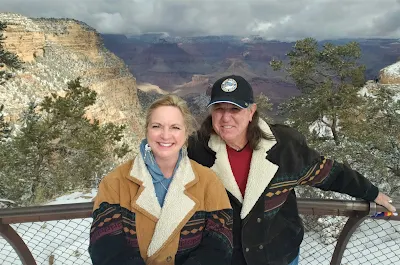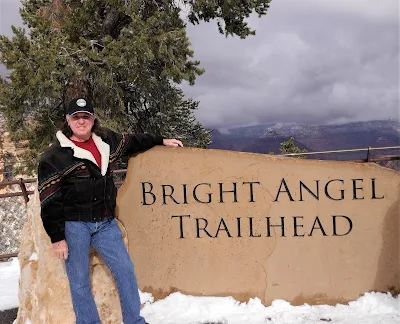The great American author, John Steinbeck once wrote – ‘You can’t go home again because home has ceased to exist except in the mothballs of memory.’
 |
| John Steinbeck - a great writer |
Actually, it was more like - What, the heck was this guy thinking? You can’t go home? Home no longer exists? Memories of mothballs? And by the way, what is a mothball?
Decades after reading those words, it made sense. I was born and raised in Riverside, California before relocating to the High Desert. Yes, I would visit Riverside quite often when my parents were alive, but after they were gone – the visits pretty much stopped.
Oh, we would still drive down during the Christmas holidays to take in the Mission Inn’s Festival of Lights. Perhaps drive down Victoria Avenue to take in the beautiful rows of orange trees – and yes, once in a while drive down the street, and pass the house I had spent my childhood in.
 |
| The Mission Inn in Riverside during the Christmas Season |
More like – geez, did I really sign up for all this adulthood drama?
Recently, I had to drive down the hill to Riverside to pick up a few items for a party one of our daughters was having. Of course, it was to be a COVID-19 compliant party – with the limit on guests to only six family members, and each guest would sequester into their own room. We would communicate with each other by means of a string attached to metal cans.
I arrived a bit early to pick up the items and found there was about an hour to burn. Never let an hour to burn go to waste, is one of my mottos.
Heading west on Route 60 from the junction with Interstate 215, I exited on Market Street and found myself driving through a place that was full of recollections of my youth.
Fairmount Park is an iconic place in the city of Riverside. Two hundred and fifty acres of relaxation.
In 1911, the city commissioned the nation’s first landscape architectural company to design an urban park. The company, first started by Frederick Law Olmsted, and later taken over by his sons John Charles Olmsted and Frederick Law Olmsted Jr. had a great amount of experience developing barren land into things of natural beauty.
Some of their most famous works were Yale University in New Haven, Stanford University in California, and Central Park in New York City, just to name a few.
This talented group of landscaping architects was as busy as bees in spring. Just thought I’d throw that in – I’ve seen bees buzzing a lot in spring, and they seem pretty busy. Same with the folks from Olmsted and Olmsted.
With this incredible resume, the city of Riverside knew they had the best team on their side.
“Well, let’s grab some shovels and start planting trees!” one of the city planners gushed.
“Yes, some giant Redwoods would be nice, and perhaps a wading pool with duckies,” suggested a city engineer.
“Hmmm, I believe it may take some time to design the park before we start the actual process,” either John or Frederick Jr. replied.
“Oh,” said the city planner. “I’ll put the shovels back in the shed.”
It took nearly thirteen years to complete the project, but the time and effort were worth it. In those years, Olmsted and Olmsted turned vacant land into an inviting and restful respite for the city residents.
There were walking trails through lush green grass areas. With the completion of Lake Evans, there was plenty of space to fish and to use sailboats or rowboats. There were tall trees to lay beneath on hot summer days. A bandstand to listen to music by local bands. Eventually, tennis courts, lawn bowling areas, and a large rose garden complete with a gazebo were completed, making Fairmount Park something to be very proud of, in this city nestled beside the Santa Ana River.
 |
| Looks like a nice place to take a restful saunter |
 |
| The rose garden with a beautiful gazebo |
No one was supposed to swim in Lake Evans. Signs were posted everywhere. But, and that’s the pivotal word ‘but’ after riding along the streets of Riverside, we were hot and sweaty.
My mother would ask, more than once, “Why is it that you get pink eye so often?”
 |
| Pink eye, again? |
Ancient thoughts of days spent at the lake ran through me as I continued my slow drift through the wonderfully green park. A tree inventory conducted in 1985, determined that many of the trees planted during the building of the park were still living. It made sense, as I walked around a bit and marveled at the size of some of the Montezuma Cypress trees – it looked as though it would take four or five adults linked together to wrap their arms around the trunks.
 |
| Another view of the lake at Fairmount Park |
As I continued around the park, I saw a group of young ladies walking and chit-chatting with each other.
I wanted to get their take on the park. Why were they walking around it? How often did they do it?
Slowing, I rolled my window down and proceeded with caution – I didn’t want to come across as a park creep and get sprayed with mace.
“Excuse me,” I said in my friendliest tone – maybe that did sound kind of creepy. “I’m a writer, and was wondering if I could ask you, ladies, a couple of questions?”
“What do you write?” asked one of the women.
“This and that, mainly about traveling to places worth visiting.”
“Sure, ask away,” Silvia said.
“Do you walk through the park often and why?”
Mary replied. “The park is near my house and it so beautiful and clean out here. Makes me feel great each morning as we take this mile walk.”
“I love it here,” Barbara stated. “I’ve been coming to this park since I was a child with my parents.
“It’s a piece of history for Riverside. Look around, it’s green, peaceful, and the rose garden is something no one would get tired of looking at.”
“My husband and I love hanging out in here in the summer. So relaxing,” finished Silvia.
 |
| In the summer, how couldn't this be relaxing |
In fact, in 2011 the American Planning Association designated the park as a ‘Great Public Space.’ That same year, the City Parks Alliance out of Washington D.C., also designated Fairmount Park as a ‘Frontline Park’ – a jewel in the park system.
As I drove out of the park and headed toward my original destination, I thought back to what Steinbeck had written.
Memories of the past may not be allowed to exist in reality alongside the present, but that doesn’t mean new memories cannot be created.
And isn’t that what traveling is all about?

















